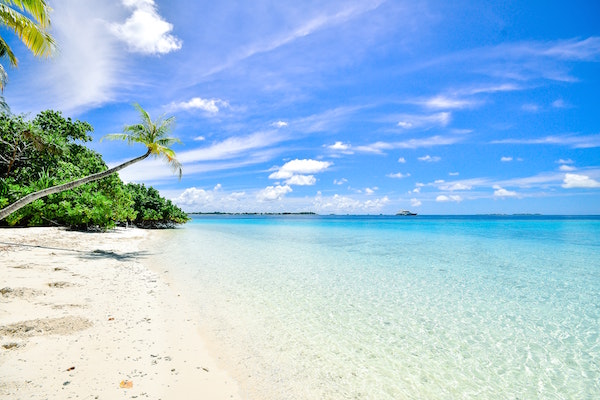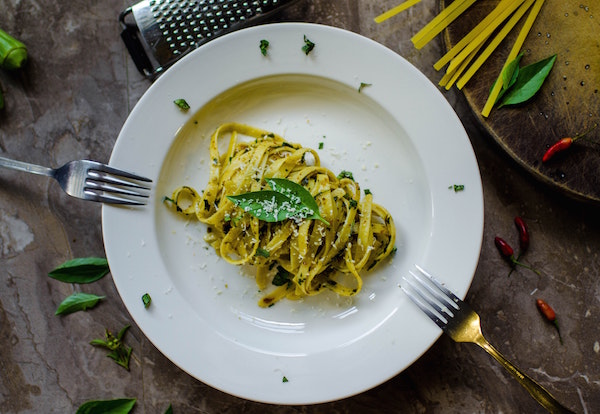
I just got back from 2 weeks in Italy.
I bounced around a few different cities and regions with my family. Had no access to a gym. (The best I could do was a few pushups here and there.)
I spent 14 days eating huge quantities of pasta, pizza, and desserts. Plus all the wine!
In total, I gained about 1 pound.
In truth, I expected to gain way more after all that! I credit my use of intermittent fasting while traveling with helping me stay lean on my vacation.
So should you use intermittent fasting on vacation?
Yes! This is one of the best ways I know to sort of minimize the damage done to your physique when you’re eating, drinking, and working out less (or not at all).
Here are all of my best tips about how to fast while you’re traveling and things you need to know before your next vacation.
1. Yes, you should still fast on vacation. Here’s why.
Let me quickly run you through the benefits of intermittent fasting on vacation.
If you use IF in your daily life, you should definitely keep doing it. A trip or vacation might even be a good time to start if you’ve never done it before! And here’s why.
For all of the benefits of fasting, the main one in my eyes has always been the way it naturally suppresses your appetite and caloric intake.
Yes, you can enter ketosis and burn fat while fasted. Yes, there are other health benefits, like:
- Increased longevity
- Better insulin sensitivity
- Lower risk of heart disease
But the simple truth is that eating in the morning kickstarts your stomach and often makes you hungrier than if you just didn’t eat at all.
By limiting your eating window, which is easier to do than you think, you’ll naturally consume fewer calories throughout the day.
Now, vacation is no time to deprive yourself! What’s the point of traveling if you’re going to pass up on all the good food and make yourself miserable, just so you can stay lean?
With IF, you leave more room to enjoy big dinners, desserts, and drinks in the evening on your vacation without the guilt.
(By the way, you might be interested in my list of the best supplements to take while fasting — a few of them might surprise you.)
2. You can adjust your fasting times for convenience and enjoyment.
There are a lot of different ways to fast, and different schedules to follow.
The most common IF schedule is probably the 16/8 model – where you can eat for an 8-hour window every day while you fast for the other 16.
There’s also Warrior-style fasting, which is 20 hours fasted and a 4-hour eating window, 18/6, and every other combination you can think of.
(You usually need to have not eaten for at least 12 hours to consider yourself “fasted.”)
Whatever schedule you follow, you might consider shifting or altering it to make your vacation more fun or convenient.
For example, I like to use something similar to a 16/8 fast. I usually have a big dinner and then often a small snack around 9pm or so, before I head off to bed.
That means I’m “allowed” to start eating again around 1pm the next day.
(Check out my intermittent fasting meal plan for an example of how I eat in a day.)
That’s what works for me in my daily life. But on my vacations I usually find it’s easier to end my eating window at dinner, usually around 7-8pm or so, and I’ll skip the late-night snack.
That moves my eating window for the next day up a little bit so I don’t have to wait as long to eat.
(If you’re wondering, yes, alcohol does break a fast.)
Because let’s face it… You’re probably not on vacation alone. You’re likely with friends or your family, and it kind of sucks to be fasting when everyone else wants to eat lunch or a snack together.
So don’t be so rigid when you’re trying to relax and enjoy yourself. Move your fasting times around to what works best for you and the group you’re traveling with.
You want to stay lean, yes. But it’s also important to, you know, enjoy your vacation.
3. How to do intermittent fasting on long or international flights.
I went to Thailand last year, which is somewhere around 12-15 hours of flight time across 12(!) timezones, and trying to continue my intermittent fasting made my head spin.
When they served meals on the plane, I had no idea if I was “allowed” to eat them or not.
I knew what time it was back home, and what time it was at my destination, but trying to synchronize the two and maintain my normal fasting schedule was pretty complicated.
My best tip for this isn’t exactly groundbreaking: Don’t worry about it so much. Get on a fasting schedule once you get to your destination.
Eat what they serve on the plane so you’re not completely screwed up or starving when you land.
When you end your first full day at your destination, you can begin your fasting schedule from there.
One extra meal here or there isn’t really going to make a difference, I promise you. Plus, airplane meals are usually small and won’t make you balloon up!
4. Fasting during international travel (and how to handle your macros)

One interesting thing about international travel and your diet/nutrition, in general, is that you’ll have vastly different food choices available to you than you’re used to.
In both Thailand and Italy, carbs were abundant. (In Asia, it was rice and noodles. In Europe, pasta, bread, and pizza.)
Protein was sometimes harder to come by. Getting your macros exactly right was pretty much out of the question.
You also don’t quite have all the comforts of home. You don’t have a fridge full of food for when you need a snack. You (often) aren’t cooking your own meals. You can’t just look up calorie counts on MyFitnessPal when you’re at a street food vendor or an off-the-grid Tuscan restaurant.
My approach to nutrition during international travel has been really simple and relaxed:
I don’t count calories. I use intermittent fasting to limit my calories somewhat, and I try to get as much walking and activity as I can (exploring big cities helps), but otherwise I just want to enjoy myself and the food.
(Read: My best tips for counting calories without using an app.)
I take every opportunity for extra protein. If a restaurant serves steak or chicken, I’m getting it. If I pass a street vendor with meat kabobs, I’m grabbing one. I try to load up on protein when I can so I can enjoy myself when carbs are the only option, which is often the case in other countries.
If you’re traveling for a month, or two months, or some other extended amount of time, you might need to be a little more disciplined.
But for shorter stretches of 1-3 weeks or so, you’ll do well setting a few rules for yourself that keep you somewhat in check, and then just enjoying the ride.
5. How to adjust when you come home
This happened to me after Italy.
Rome is 6 hours ahead of where I live on the East Coast of the U.S.
So when we got back, I found myself getting SO hungry early in the day.
For a few days, I’d be ravenous by 9:30am. Which is SO bizarre to me, because I am a veteran faster.
(I even did a 24 hour fast. You can read about it and see before and after pictures here.)
Depending which direction your fly, your internal clock is going to be completely screwed up in one way or another.
Even if you didn’t travel far on your vacation, you might find it difficult to adjust to your eating strategy after a week or two of taking it easy and eating more or less to your heart’s content.
The best way to re-acclimate is to take it slow.
You may have to break your fast early for a few days and slowly push it back as you adjust.
It’s asking a lot of your body to go right back into serious intense cutting or dieting after a stretch of feasting, so you may need to also slowly lower your calories back down a little bit each day.
6. If you don’t want to fast on vacation, don’t! (Or you can throttle it back.)
You know what?
If you want to take a vacation from fasting, that’s totally fine.
Breakfast is delicious. Eating breakfast with your family is fun and enjoyable.
Don’t miss out on that if it pains you to do so!
Contrary to what some people might think or say, taking a break from intermittent fasting won’t screw you up. You’ll be able to get back into it pretty quickly when you get home.
It’s a great tool to use on vacation to stay lean, but hey, you only live once. You can deal with the consequences later if you just want to have fun and not worry about this stuff.
You can also throttle your fasting back a little, if you want more of a middle-ground solution. On my vacations, I rarely make it the whole 16 hours during a fast — I’ll usually cave between 12-14 hours. And that’s fine with me.
(I try to make it at least 4 hours after I wake up. But you know? Sometimes I don’t. And I really don’t care.)
The world won’t end if you eat early. I promise.
Wrapping Up
Intermittent fasting is an amazing way to minimize weight gain on vacation or during international travel.
But you shouldn’t be a slave to it.
The more rigid you are with your fasting, the less you’ll enjoy your vacation.
It will be pretty easy to stick to the plan at a big beach house you can stock with groceries. But going to new countries is ALL ABOUT THE FOOD — don’t kill yourself trying to stay lean and miss out on new experiences.
I gained 1 pound in Italy over 2 weeks. I came back from Thailand almost the exact same weight that I left at.
In both cases, I was really relaxed with my fasting schedule and much more concerned with enjoying myself. (Staying active on your trip helps, too.)
Have you ever tried intermittent fasting during a long international trip? How did it go? Got any tips for us?
Share them below!